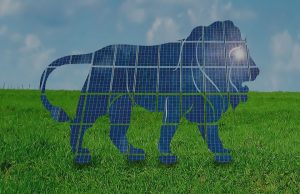India has been ranked 4th in the Global Wind Power Installed Capacity index after China, USA and Germany with cumulative installed wind power generation capacity of 28,279 MW in 2016.
- The Government is aiming to increase share of clean energy through massive development and deployment of new and renewable energy in India to meet Energy security, Electricity shortages, Energy access and Climate change among others.
Various new and renewable energy targets installed by Government
India achieved the largest-ever wind power capacity addition of 3,423 MW in 2015-16, exceeding the target by 43 per cent. During 2016-17, a total of 1,502 MW capacity has been added till 31 October 2016, making cumulative achievement 28,279 MW.
The country also achieved the biggest ever solar power capacity addition of 3,019 MW in 2015-16, exceeding target by 116 per cent. During 2016-17, a total 1,750 MW capacity has been added till 31 October 2016, making cumulative achievement of 8,728 MW.
- India installed 31,472 solar pumps in 2015-16, which is higher than the total number of pumps installed during last 24 years, ie, since the beginning of the programme in 1991. So far, 92,305 solar pumps have been installed in the country as of 31 October 2016.

- During 2016-17, against a target of 400 MW, 51 MW installations of biomass power plants have been achieved making a cumulative achievement to 4,882 MW. Biomass power includes installations from biomass combustion, biomass gasification and bagasse co-generation.
- During 2016-17, against a target of 1.00 lakh biogas plants, 0.26 lakh biogas plant installations have been achieved, making a cumulative achievement to 4.94 million biogas plants as of 31 October 2016.
- A capacity addition of 14.30 GW of renewable energy has been reported during the last two and half years under Grid Connected Renewable Power, which include 5.8 GW from Solar Power, 7.04 GW from Wind Power, 0.53 from Small Hydro Power and 0.93 from Bio-power.
Future Targets of Government
The Government of India in its submission to the United Nations Frame Work Convention on Climate Change has stated that India will achieve 40 per cent cumulative Electric power capacity from non-fossil fuel based energy resources by 2030 with the help of transfer of technology and low cost International Finance including from Green Climate Fund.
- In order to achieve the renewable energy target of 175 GW by the year 2022, the government has launched various programmes/schemes during the last two years such as Solar Defence Scheme, Solar scheme for CPUs Solar PV power plants on Canal Bank and Canal Tops, Solar Pump, Solar Rooftop etc.
- Various measures have been initiated and special steps taken in addition to providing financial support to various schemes being implemented by the Ministry of New and Renewable Energy.
- These include suitable amendments to the Electricity Act and Tariff Policy for strong enforcement of Renewable Purchase Obligation (RPO) and for providing Renewable Generation Obligation (RGO); setting up of exclusive solar parks; development of power transmission network through Green Energy Corridor project; identification of large Government complexes/buildings for rooftop projects among others.
- Other steps are provision of roof top solar and 10 per cent renewable energy as mandatory under Mission Statement and Guidelines for development of smart cities; amendments in building bye-laws for mandatory provision of roof top solar for new construction or higher Floor Area Ratio; infrastructure status for solar projects among others.
- The target of 175 GW renewable power, 2022 includes 60 GW from wind power, 100 GW from solar power, 10 GW from biomass power and 5 GW from small hydro power. A target of 16660 MW grid renewable power (wind 4000 MW, solar 12000 MW, small hydro power 250 MW, bio-power 400 MW and waste to power 10 MW), has been set for 2016-17.
- Besides, under off-grid renewable system, targets of 15 MW equivalent waste to energy, 60 MW equivalent biomass non-bagasse cogeneration, 10 MW equivalent biomass gasifiers, 1.0 MW eq. small wind/hybrid systems, 100 MW equivalent solar photovoltaic systems, 1.0 MW equivalent micro hydel and 100,000 nos. family size biogas plants have been set for 2016-17.






